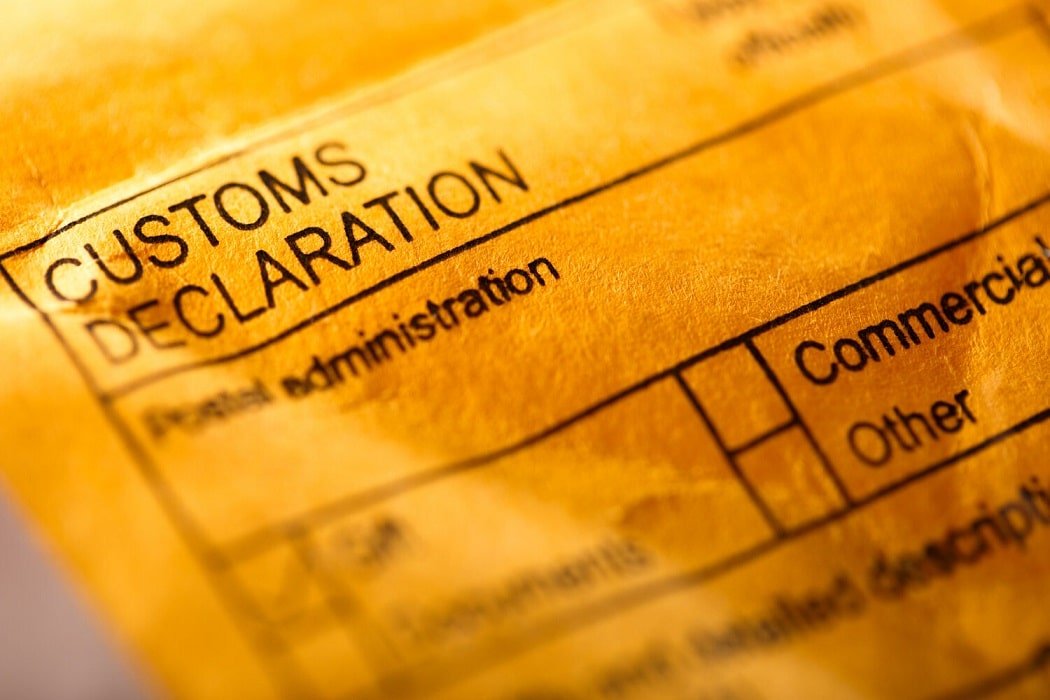Shipping Art Worldwide - Everything You Need To Know
Now that you have sold your work of art, you would ideally want to deliver and install it personally for your buyer to ensure that your work is in its best condition. Chances are, however, that you sold your art online and you will have to ship it loacally or internationally. As an artist, your expertise lies in creating works of art, and the whole shipping process can easly create a perplexing challenge for artists.
However, once you have made a sale to an international client, it is your responsibility to ensure that it reaches them in a quick and safe manner.
Working in a gallery gave me a lot of experience packing and shipping art of every shape and size both locally and internationally. It has always been key to ensure that the artwork is professionally packaged and well protected for the journey.
A lot of thoughts goes into this process and I would like to share with you some tips I’ve learned over the years.
Here is how you can go about shipping something as fragile and delicate as artwork and ensure it arrives is in the best condition.
Packaging
Good packaging forms the crux of safe shipping. You must package your artwork such that you prevent any sort of damage to it during transit. This, however, does not mean that you must go over the top with packaging and make it appear bulky. Efficient packaging is key to making you look like a professional, while also helping you save shipping costs. Here are a few tips on packaging paintings.
Your Moment is Now. Be featured in our Interview with Artists series and share your inspiring story!
Handy Tools
To package your artwork appropriately, you require a few tools.
Appropriately container Pen or a marker
Measuring Tape
Box sizer, to make folds and modifications to the cardboard box
Packaging Tape
Measure Your Work
Obtain the exact measurements of your artwork to decide on the type of crate, box, tube, or any type of container that you need.
Then calculate the dimensional weight of your artwork to estimate the shipping costs.
You can use some online calculators from FedEx or UPS to calculate the exact dimensional weight.
Protect the Work Surface
Be careful and gentle with your artwork, and especially with the work surface. Pad it appropriately with foam, cloth, bubble wrap, or cardboard to avoid scuffs and scrapes.
Glassine Paper: Archival quality glassine paper is an excellent choice to protect canvases from both moisture and dust. You can cover all edges and sides of your artwork with glassine, and use artist tape to hold it together. If you are rolling your painting, you can also use glassine paper as protection. Place your painting on glassine paper that is at least 2 inches larger on all sides.
Plastic Wrap: You can also use plastic palette wrap as a protective coating to prevent your canvases, oil paintings, and art prints from picking up scratches while being moved around. Ensure that canvas paintings are wrapped in a foil of at least 3.5mm thickness
Protect Glass
For framed artwork, you will need to protect the glass frames from damage and breakage. If you have painter's tape, then tape it in a star pattern (basically two X shapes which overlap at the center). Alternatively, a tight layer of plastic wrap or cling film will also suffice. On the off chance that the glass shatters, tape or plastic wrap ensures that the pieces will not come loose and puncture your art.
Wrapping in Bubble Wrap
One of the most effective packaging tools is bubble wrap. Covering your artwork in multiple layers of bubble wrap is an excellent way to protect it from damage. Just ensure that you place the wrap in such a way that the bubbles face outwards, to avoid any potential impressions occurring on your art.
Make sure that all the surfaces, edges, and corners of your artwork are covered with at least 2 inches of bubble wrap. Finally, use packing tape to seal all the seams of the bubble wrap and also provide additional protection against moisture.
Filling Voids
The two biggest enemies of shipping fragile items are movement and friction. Use bubble wrap to fill in the voids in your container so that your artwork moves as little as possible. Avoid using packing peanuts, since they are likely to settle at the bottom, and leave the top edges exposed.
Foam Board 'Sandwich'
Your bubble-wrapped artwork can be placed in between 0.5-inch thick foamboards for additional protection. You can then tape the foam boards together to effectively 'sandwich' your artwork.
Seal the Deal with Packaging Tape
When you have packed and wrapped your art for international shipping, you can seal the packed artwork with packaging tape. Avoid using duct tape or cellphone tape since they are not sturdy enough for transportation. Heavy-duty high-quality packing tape is your best bet!
Choose a Shipping Company
The shipping industry is incredibly large, with thousands of players and companies involved in each stage. Two of the biggest players in this field are FedEx and UPS. They offer reasonable rates and delivery times and also help you track the package at all times. Typically, UPS charges a little more than FedEx. In most cases, however, the difference is minimal. Both of these companies offer volume discounts.
The only difference between UPS and FedEx is related to delivery times. FedEx delivers from Tuesday through Saturday, whereas UPS delivers from Monday to Saturday. In case you need your art to arrive specifically on a Monday, then you'll have to go with UPS.
For shipping large artworks, you can get in touch with freight companies. In addition to shipping at lower costs, they will also help with packaging, which can significantly lower the effort from your end.
Customs and Other Documents
One of the most intimidating aspects of selling your art internationally is having to deal with customs. If you sell your artwork through an art gallery, they will handle customs on your behalf. If you are coordinating the delivery yourself, however, you need to prepare the paperwork on your own.
Missing out on any details on the declaration document can lead to a returned shipment or delayed delivery, both of which are going to leave your customer unhappy.
Keeping yourself educated about the customs procedure and the required documents can go a long way in making life easy for you. Here are the most important documents for shipping art internationally.
Customs Declaration. For all commercial shipments, a customs declaration is a must. Typically, there are two different customs forms depending on the value of the artwork.
Be sure to check if your artwork classifies as lower value at or higher value art, and choose the appropriate customs declaration.
Export Invoice. An export invoice is necessary for artworks of all types that are sent to a country outside the customs union. For instance, if you live in Germany and want to ship your work to the Netherlands, you will not need an export invoice, since both the countries are situated inside the same customs union, the European Union.
However, if you were to ship it to the United States, you will require an export invoice.
Use a commercial export invoice when you sell your art yourself, and a commercial proforma invoice when you put your art up for sale at an exhibition.
Furthermore, if you want your art returned, you will need to also include an import invoice. You can find an export invoice template here and a commercial proforma invoice here.
EORI (Economic Operator Registration and Identification Number). If you wish to ship your artwork into or out of the European Union, you require an EORI number. You can obtain an EORI number from here.
VAT (Value Added Tax). Whenever you are importing artwork into the United Kingdom, you will need to pay VAT.
Trade Tariff Commodity Codes. In the United Kingdom, Trade Tariff Commodity Codes are used to classify the goods that are exported or imported. Make sure to indicate the correct code for artwork on the customs declaration.
Export Licenses. For certain countries that you will ship art to, based on the age and the value of the artwork, you may require an export license.
Address Format. Not all countries across the world use a similar format to write addresses. Double-check that the address format to ensure seamless delivery to your customer.
Shipping Insurance. Popular shipping companies such as FedEx and UPS offer a standard $100 shipping insurance for all products. This amount, however, may not cover the value of your art. Although additional coverage is offered by most carriers, there is a high chance that the insurance will not be worth more than the actual cash value of the artwork itself.
Additionally, these shipment companies have a long list of exclusions, and your artwork might fall under it. With in-house insurances leaving a lot to be desired, third-party shipping insurance is your best bet against unforeseen damages or losses.
Shipping insurance agencies such as Cabrella and Shipsurance, in addition to many more, offer full coverage for your artwork shipments. In addition to costing significantly lesser, you can also file claims hassle-free in just a matter of minutes.
Final Notes For Shipping Art Internationally
Robust and efficient packaging is incredibly important when it comes to international shipping, in order to keep your artwork in the best condition. By following these simple packaging tips, you can ensure that the delivery process is smooth, and you also come across as a professional to your customers.
Owing to the size and weight limits of the traditional shippers such as FedEx and UPS, you can make use of the services of a freight company for larger shipments. Be sure to complete all the documentation so that your artwork passes through customs without problems.
Finally, ensure that your artwork has been insured with a full-fledged cover to protect yourself from any risks. Follow these steps to-the-T, and international artwork shipping will be a walk in the park!




